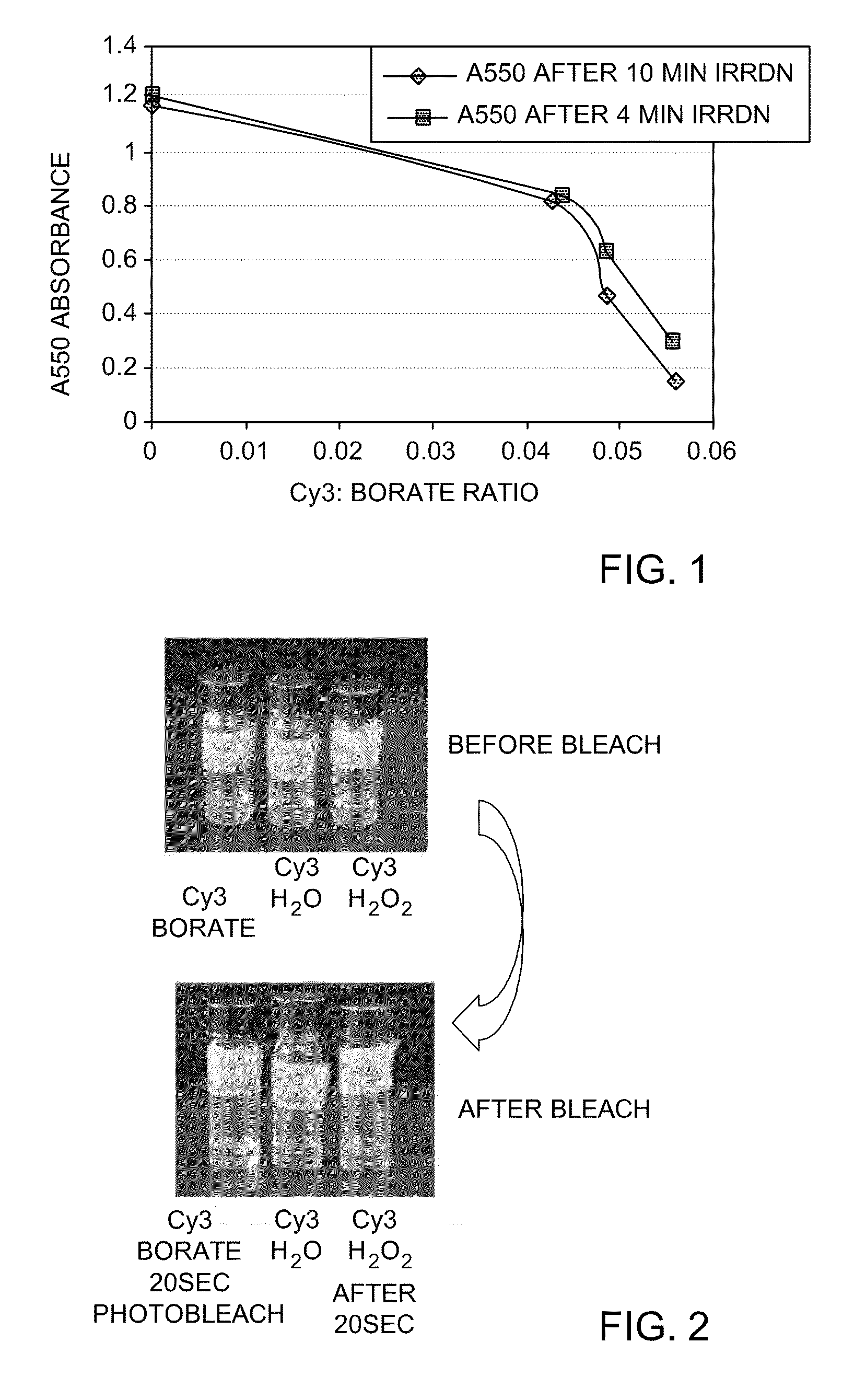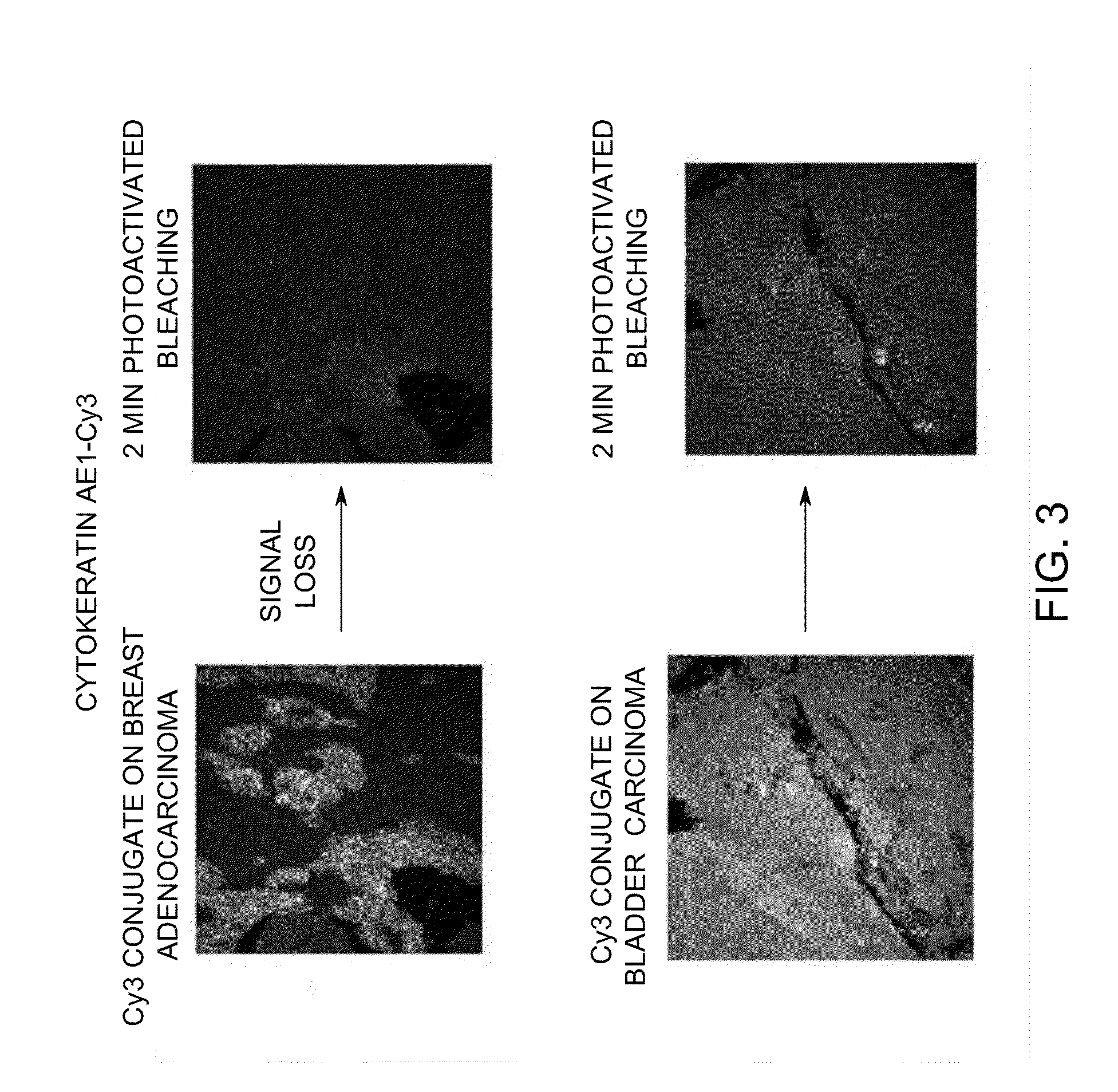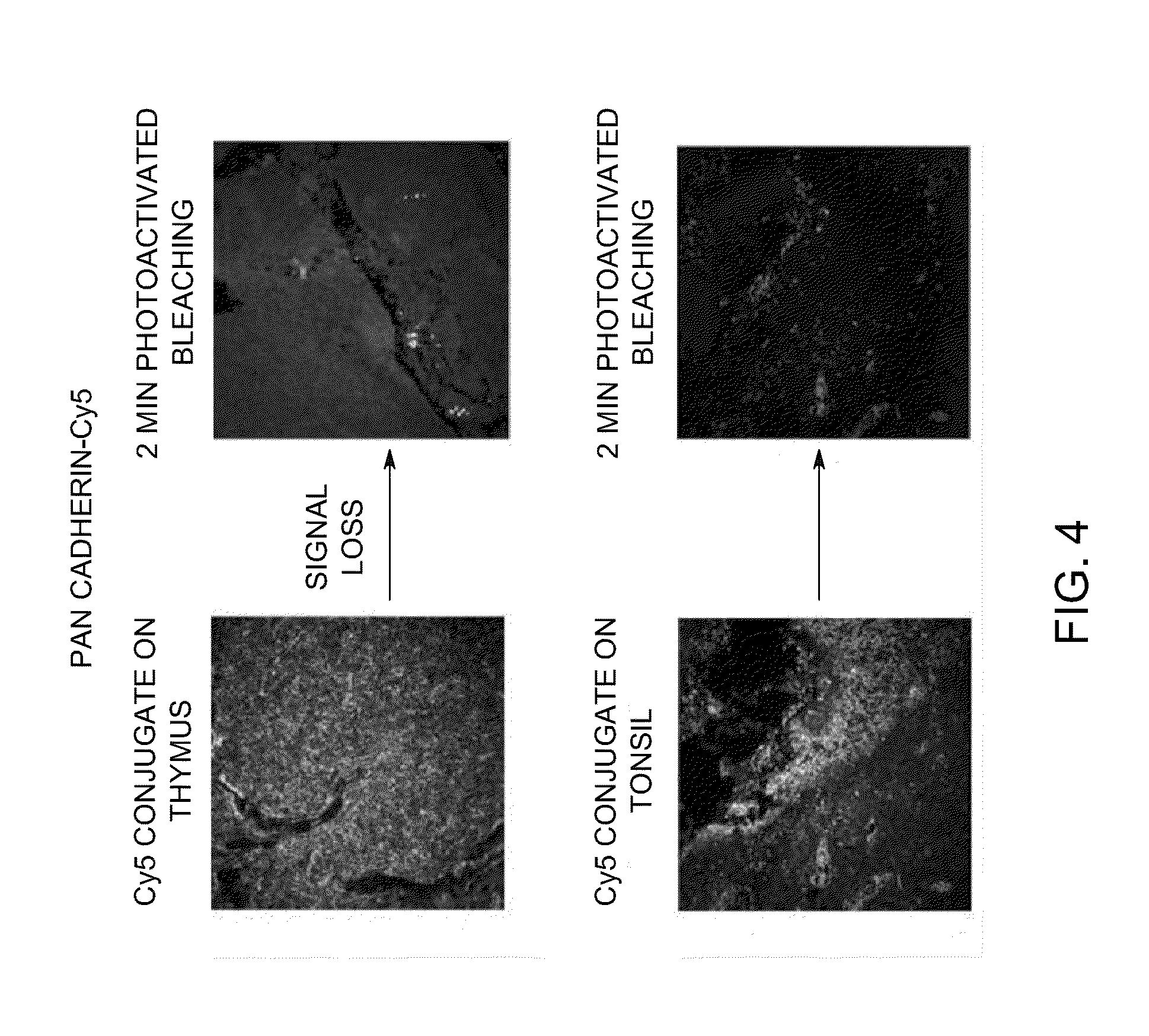Photoactivated chemical bleaching of dyes
a technology of photoactivated chemicals and dyes, applied in the field of photoactivated chemical bleaching of dyes, can solve the problems of increased signal-to-noise ratio, and achieve the effect of rapid signal cycling
- Summary
- Abstract
- Description
- Claims
- Application Information
AI Technical Summary
Benefits of technology
Problems solved by technology
Method used
Image
Examples
example 1
Photoactivated Chemical Bleaching of Cyanine Dyes: Dose Response
[0277]To a solution of Cy3 in PBS, 2-60 equivalents of triphenylbutyl borate lithium salt were added, and the solution was irradiated for 4 minutes or for 10 minutes. Absorbance at 550 nm was measured to monitor photoactivated chemical bleaching, and the results were plotted, as is shown in FIG. 1. The solid line with squares represents A550 absorbance after Cy3 dye was irradiated for 4 minutes in the presence of different concentrations of triphenylbutyl borate. The solid line with diamonds represents A550 absorbance after Cy3 dye was irradiated for 10 minutes in the presence of different concentrations of triphenylbutyl borate. The results demonstrate that the extent of Cy3 bleaching increases with increasing concentration of the borate salt.
example 2
Comparison of Cy3 Bleaching by Photoreaction and Thermal Oxidation
[0278]Three methods for bleaching Cy3 were compared. For the photoactivated chemical bleaching reaction, Cy3 was mixed with triphenylbutylborate lithium salt and irradiated for 20 seconds. For the thermal oxidation reaction, Cy3 was mixed with basic hydrogen peroxide and incubated for 20 seconds. For the control reaction, Cy3 was incubated with water for 20 seconds. The color of the Cy3 solution in all three reactions was compared before and after each incubation and / or reaction. Shown in FIG. 2 is the grayscale image of the vials containing the thermal oxidation reaction, the photoactivated chemical bleaching reaction and the control reaction before and after completion of bleaching. The control reaction does not change its dark pink color (vial shown in the center). The color of the thermal oxidation reaction changes from dark pink to light pink after 20 seconds of thermal oxidation (vial shown on the right). The ph...
example 3
Photoactivated Chemical Bleaching of Cy3 and Cy5 in Tissues
[0279]Tissue Microarrays (TMA, Pantomics Catalog No. MTU541C) were stained with Cy3-conjugated cytokeratin and Cy5-conjugated pan-cadherin. Photoactivated chemical bleaching of the Cy3 and Cy5 was accomplished by incubating stained TMAs with triphenylbutylborate lithium salt and irradiation for 2 minutes. Images were taken on the Olympus Microscope before and after bleaching. Images of samples stained with Cy3-conjugated cytokeratin before and after bleaching are shown in FIG. 3. Images of samples stained with Cy3-conjugated cytokeratin before and after bleaching are shown in FIG. 4. This data demonstrates that photoactivated chemical bleaching effectively destroys Cy3 and Cy5 signals in stained tissues.
PUM
| Property | Measurement | Unit |
|---|---|---|
| temperature | aaaaa | aaaaa |
| wavelength | aaaaa | aaaaa |
| temperature | aaaaa | aaaaa |
Abstract
Description
Claims
Application Information
 Login to View More
Login to View More - R&D
- Intellectual Property
- Life Sciences
- Materials
- Tech Scout
- Unparalleled Data Quality
- Higher Quality Content
- 60% Fewer Hallucinations
Browse by: Latest US Patents, China's latest patents, Technical Efficacy Thesaurus, Application Domain, Technology Topic, Popular Technical Reports.
© 2025 PatSnap. All rights reserved.Legal|Privacy policy|Modern Slavery Act Transparency Statement|Sitemap|About US| Contact US: help@patsnap.com



